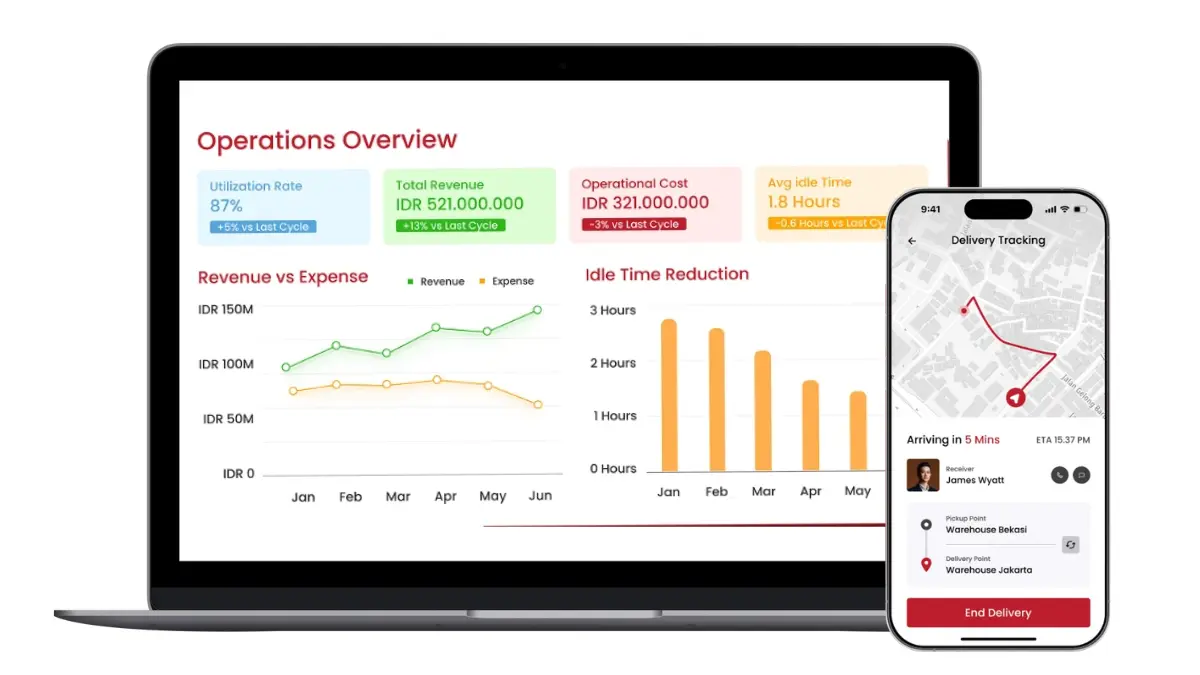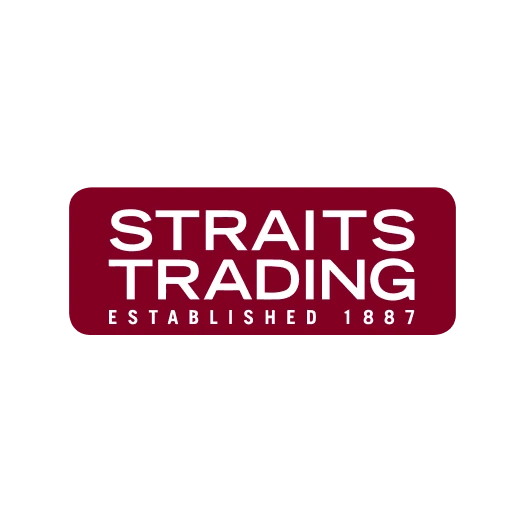In Singapore, the final leg of the delivery journey, known as last-mile delivery, has become a critical component of the logistics landscape. Despite the country’s advanced infrastructure, challenges such as traffic congestion, limited curb space, and rising customer expectations for rapid deliveries persist.
The Singapore last-mile delivery market is projected to reach USD 12.98 billion in 2025, with a compound annual growth rate (CAGR) of 12.19% through 2030. This growth is driven by the surge in e-commerce, increased demand for same-day deliveries, and the need for efficient healthcare logistics.
To tackle these challenges, companies can leverage solutions like HashMicro Transportation Management, which offers route optimization, real-time tracking, and automated dispatch. These tools enhance delivery efficiency, reduce delays, and improve overall service reliability.
As we delve deeper into the mechanics of last-mile delivery in Singapore, it’s evident that overcoming these challenges requires a combination of strategic planning, technological integration, and adaptive solutions.
Key Takeaways
|
What is Last Mile Delivery?
Last mile delivery is the final step of transporting goods from a warehouse or distribution center directly to the customer’s doorstep. It focuses on how products reach end-users efficiently, striking a balance between speed, cost, and reliability.
Despite covering a short distance in the overall supply chain, last mile delivery is often the most complex and costly part. Urban congestion, tight delivery windows, and rising customer expectations for same-day or instant deliveries make this stage challenging.
Companies are increasingly relying on technology, such as route optimization, real-time tracking, and automated logistics systems, to streamline operations, reduce errors, and enhance customer satisfaction.
How Does Last Mile Delivery Work?
The last mile delivery process may seem straightforward, but it involves several critical steps to ensure parcels reach customers efficiently and on time. Here’s a breakdown of the process:
1. Order entry into a central system
The process starts when orders from e-commerce platforms or fulfillment centers are entered into a centralized system. Each order is assigned a tracking number and linked with a delivery note, allowing both sender and recipient to monitor progress and verify order details.
2. Arrival at the transportation hub
Orders are then transported to a hub, where logistics teams ensure parcels are ready for quick dispatch to customers. Proper handling at this stage is key to minimizing delays.
3. Assignment to delivery personnel
Parcels are sorted and allocated to delivery personnel based on routes and addresses. Automation tools such as conveyor belts, carousels, and robotics often support this step, improving efficiency and reducing errors.
4. Loading and dispatch
Orders are scanned and loaded onto delivery vehicles for shipment. Scanning updates the system in real-time, enabling easier tracking and accountability in the event of missing parcels.
5. Final delivery
Delivery personnel bring the parcels to the customer’s doorstep or designated pickup points. Once delivered, tracking information is updated to confirm completion and maintain transparency.
What are the Benefits of Last Mile Delivery?
 Last mile delivery is more than just getting packages to customers; it provides key advantages that improve both business operations and the overall customer experience. Companies that manage this stage effectively can gain a stronger market position and build lasting customer loyalty.
Last mile delivery is more than just getting packages to customers; it provides key advantages that improve both business operations and the overall customer experience. Companies that manage this stage effectively can gain a stronger market position and build lasting customer loyalty.
1. Improved customer satisfaction
Timely and accurate deliveries build trust and loyalty. Customers enjoy the convenience of fast service, flexible delivery options, and real-time updates, which reduce frustration and encourage repeat purchases, thereby enhancing the brand’s reputation in a competitive market.
2. Operational efficiency
Optimized routes, automated sorting, and streamlined warehouse-to-doorstep processes help reduce fuel costs, delivery times, and human errors. These improvements enable businesses to allocate resources more effectively, scale operations, and maintain cost-effectiveness.
3. Real-time visibility
Tracking systems provide transparency for both businesses and customers. Monitoring each parcel’s status reduces the number of inquiries and complaints, helps resolve delivery issues quickly, and lowers the risk of lost or misplaced items.
Strategies to Improve Last Mile Logistics
Optimizing last mile logistics is essential for businesses aiming to reduce costs, improve delivery speed, and enhance customer satisfaction. Companies can adopt several strategies to make their last-mile operations more efficient:
1. Route optimization
Using software to plan the most efficient delivery routes helps reduce fuel consumption, travel time, and delivery delays. Dynamic routing can also adjust to real-time traffic or weather conditions, ensuring timely deliveries even in urban congestion.
2. Parcel consolidation and hub management
Centralizing deliveries at regional hubs or consolidating multiple orders reduces the number of trips needed and minimizes delivery costs. Efficient hub management ensures faster sorting and dispatch of parcels.
3. Technology integration
Implementing tracking systems, automated sorting, and delivery management software increases transparency and accuracy. Real-time monitoring enables companies to respond promptly to delays, reroute deliveries, and provide timely updates to customers.
4. Flexible delivery options
Offering alternatives such as same-day delivery, time-slot selection, or smart lockers enhances customer convenience. Flexible options not only improve satisfaction but also reduce the number of failed delivery attempts.
5. Use of advanced delivery methods
Companies can explore the use of drones, autonomous vehicles, or crowdsourced couriers to handle high-demand areas efficiently. These methods help overcome traffic congestion and expand delivery capacity without significant additional costs.
Last Mile Delivery Trends
As e-commerce continues to grow and customer expectations evolve, last mile delivery is undergoing rapid innovation. Businesses are adopting new strategies and technologies to stay competitive and meet demand. Here are the key trends shaping end-mile delivery delivery today:
1. Same-day and instant delivery
Consumers increasingly expect orders to arrive within hours of purchase. Retailers and logistics providers are expanding same-day and instant delivery options, particularly in urban areas, to enhance convenience and satisfaction.
2. Smart lockers and pickup points
To reduce failed deliveries and improve efficiency, companies are deploying smart lockers and designated pickup locations. These solutions enable customers to collect parcels at their convenience, thereby reducing the complexity of last-mile delivery.
3. Automation and robotics
Automated sorting systems, conveyor belts, and warehouse robotics streamline the handling of parcels. Robotics also extends to delivery, with autonomous vehicles and drones being tested for faster, contactless delivery in congested cities.
Challenges in Last Mile Delivery
While last mile delivery is crucial for customer satisfaction, it comes with several challenges that can impact efficiency and profitability. Businesses need to address these obstacles to maintain reliable service and control costs.
1. Urban traffic and Congestion
Delivering in busy city areas can lead to delays, missed time windows, and higher fuel consumption. Traffic congestion remains one of the top factors affecting delivery speed and cost.
2. High delivery expectations
Customers increasingly demand same-day or instant deliveries. Meeting these expectations without compromising accuracy and efficiency is a constant challenge for logistics providers.
3. Limited parking and curb space
Finding convenient locations for delivery vehicles can be challenging in densely populated areas. Limited curb space can slow down deliveries and increase the risk of missed or delayed orders.
4. Cost management
Last mile delivery is the most expensive part of the supply chain, accounting for a significant portion of total logistics costs. Balancing fast delivery with cost-efficiency requires careful planning and optimization.
5. Failed deliveries and returns
Missed deliveries, incorrect addresses, or unavailable recipients can increase operational costs and reduce customer satisfaction. Handling returns efficiently adds another layer of complexity.
Streamline Your Last Mile Delivery with Smart Transportation Management

Efficient last mile delivery is crucial to meet growing customer expectations in Singapore. HashMicro Transportation Management helps streamline logistics with route optimization, automated dispatch, and real-time tracking, ensuring faster and more reliable deliveries.
The system also provides insights to monitor performance and identify bottlenecks. By using smart transportation management, businesses can improve operations, reduce costs, and keep customers satisfied even during high-demand periods.
Key Features of HashMicro Transportation Management System (TMS):
- Real-Time Fleet & Driver Tracking: Monitor vehicles and delivery status instantly for complete operational visibility.
- Automated Dispatch & Smart Route Planning: Quickly assign tasks and create optimal routes to save fuel and reduce travel time.
- Integrated Order and Delivery Management: Manage everything from order entry to final delivery within a single platform.
- Centralized Dashboard & Analytics: Track delivery speed, driver performance, and overall efficiency in one place.
- Cost Savings & Enhanced ROI: Minimize idle time and boost fleet profitability through smarter allocation of resources.
- Digital Proof of Delivery: Capture signatures, photos, or notes electronically to reduce paperwork and prevent disputes.
Conclusion
Last mile delivery is the final stage of transporting goods from warehouses or hubs to customers, focusing on speed, reliability, and efficiency.
Its importance cannot be overstated. This stage directly affects customer satisfaction, operational costs, and overall competitiveness in the logistics landscape.
To overcome challenges like traffic congestion and limited curb space, HashMicro Transportation Management offers last mile delivery solutions for route optimization, real-time tracking, and automated dispatch to streamline deliveries and ensure reliability.
Take the next step in optimizing your logistics. Book a free demo today and see how HashMicro Transportation Management can enhance your last mile delivery performance.
FAQ About Last Mile Delivery
-
What is the difference between first-mile and last mile delivery?
In the direct-to-consumer (DTC) model, first-mile delivery involves transporting products from the supplier to the retailer, while last-mile delivery depends on shipping carriers to deliver packages from the shipper to the final customer.
-
How long is last mile delivery?
Last mile delivery times vary based on service level, location, and carrier type, usually ranging from same-day to five business days. For instance, gig-based services like Uber Direct can complete local deliveries within a few hours.
-
What is the main problem with last mile delivery?
High shipping costs arise because delivering to individual addresses is labor-intensive, requiring more staff and vehicles than centralized deliveries. Frequent stops also lead to higher fuel consumption, increasing operational expenses.

















































